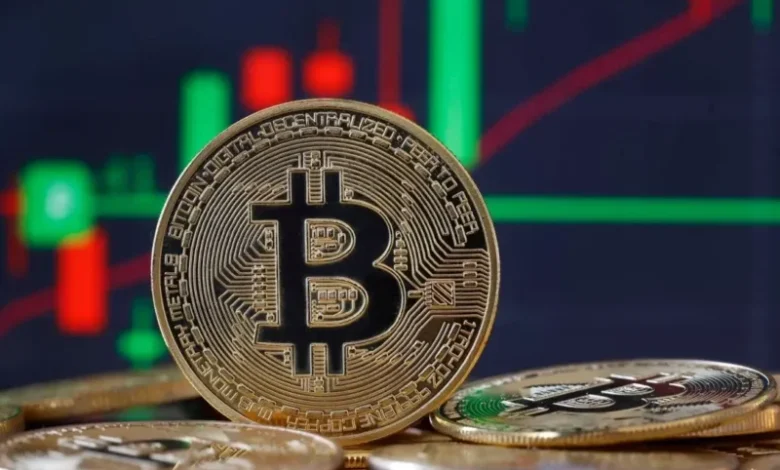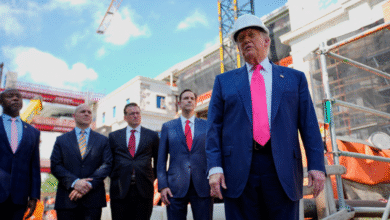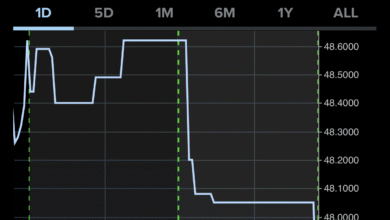Bitcoin Surges Past $85K as Fed Sparks Market Rally


Bitcoin has recently made headlines by breaking the $85,000 mark, thanks in part to a pivotal change in the Federal Reserve’s monetary policy, which has ignited a surge in the crypto market rally. With the Fed signaling an end to its quantitative tightening, traders are optimistic about future Bitcoin price surges, as the anticipation of rate cuts increases. This shift in Fed policy is being interpreted by many as a major catalyst for risk assets, further fueling a promising Bitcoin forecast for the upcoming months. However, as enthusiasm swells, investors must remain cautious, given the Fed’s raised inflation forecasts and its downgrading of GDP growth projections. The evolving landscape of Bitcoin and the broader cryptocurrency market hinges on how these monetary shifts impact market psychology and investor behavior moving forward.
The recent financial landscape has been experiencing significant shifts, particularly with digital currencies like Bitcoin taking center stage. Following a surprise announcement from the Federal Reserve regarding its plans to ease quantitative restrictions, the entire crypto space has seen a strong upswing. Investors are closely monitoring alternative assets, including Bitcoin, as they respond to changing economic signals that suggest a possible end to stringent monetary policies. This change may very well redefine how we view wealth in the digital era, propelling Bitcoin to new heights in market valuation. As the forecast for cryptocurrencies evolves in light of these developments, the conversation around Bitcoin and its ecosystem is becoming increasingly vital in discussions about modern finance.
Understanding the Impact of Fed Monetary Policy on Bitcoin
The Federal Reserve’s monetary policy plays a pivotal role in shaping the landscape of the cryptocurrency market, particularly Bitcoin. When the Fed signals shifts in its approach, such as slowing down quantitative tightening, it often leads to a surge in Bitcoin prices. This reaction stems from the perception that easing monetary policy can lead to lower interest rates, which boosts the appeal of riskier assets like Bitcoin. For instance, the recent announcement indicating a pause in quantitative tightening sparked a rally for Bitcoin, pushing its price over $85,000 as traders repositioned to capitalize on what they perceived to be a favorable shift in the macroeconomic environment.
However, while the immediate forecast may look bullish for Bitcoin due to these Fed policy shifts, it’s crucial for investors to remain cautious. The Fed has also revised its GDP growth predictions downwards while increasing inflation forecasts, suggesting underlying economic weaknesses that could impact longer-term price trends. Despite current optimism, the specter of stagflation—where rising prices coincide with stagnant economic growth—could pose significant risks for the crypto market, making it vital for investors to consider both immediate price surges and the broader economic context.
Bitcoin Price Surge: What it Means for Crypto Investors
The recent Bitcoin price surge past $85,000 has sent waves of excitement through the crypto community, with many investors eager to understand what this could mean for their portfolios. This surge is considered a bullish indicator, fueled not only by the Fed’s shift in policy but also by a broader crypto market rally that has seen increased buying activity across various digital assets. As traders react to the Fed’s hinted future monetary easing, optimism about Bitcoin’s potential to climb higher continues to grow, demonstrating how connected the cryptocurrency market is to traditional economic indicators.
Nonetheless, investors must tread carefully as the cryptocurrency market is notoriously volatile. The recent bullish sentiment is combined with warnings from financial analysts about the possibility of sustained economic challenges. As Bitcoin forecasts remain optimistic with expectations for further gains, the reality is that macroeconomic factors—like inflation and geopolitical tensions—could help or hinder this price trajectory. For savvy investors, using tools like risk management strategies will be essential to navigate this dynamic and sometimes unpredictable market.
The Future of Bitcoin: Forecasting the Next Moves in Crypto
Looking ahead, the future of Bitcoin remains a hot topic among economists and cryptocurrency enthusiasts alike. With the anticipation of rate cuts and a clearer path towards monetary easing by the Federal Reserve, many believe that Bitcoin could surge further in the coming months. Current predictions suggest that if the Fed implements these cuts, it could trigger a sustained rally in Bitcoin and other cryptocurrencies, potentially making this an ideal time for investment. Market analysts are particularly focused on the monthly performance of Bitcoin in the context of Fed announcements, as historical data often shows significant price movements following shifts in policy.
However, forecasting Bitcoin’s exact path can be complex, particularly given the unpredictable nature of the crypto market. While many crypto investors are buoyed by positive sentiment and bullish forecasts, it’s critical to remain aware of inherent risks such as regulatory changes, market sentiment shifts, and macroeconomic factors that could lead to volatility. As Bitcoin continues to evolve as a financial instrument, investors should be prepared for both bullish and bearish scenarios, ensuring that their strategies are adaptable in this ever-changing landscape.
The Rise of the Crypto Market Rally Amid Fed Policy Changes
The crypto market has witnessed an impressive rally recently, responding robustly to the Federal Reserve’s announcement regarding its monetary policy. As the Fed revealed plans to slow quantitative tightening, cryptocurrencies like Bitcoin experienced a surge that has reinvigorated investor interest across the board. This shift has played a significant role in boosting not only Bitcoin prices but also the value of alternative digital assets, signaling a potential turnaround for the sector after a prolonged bearish phase.
However, the crypto market’s rally doesn’t come without its challenges. Analysts caution that while the current surge in Bitcoin and other cryptocurrencies seems promising, it also raises concerns over sustainability. The impacts of the Fed’s monetary easing must be balanced against economic indicators and inflation, which could temper this bullish momentum. Investors are encouraged to monitor the evolving economic landscape closely, as any signs of weakening fundamentals could quickly alter the current narrative of a crypto market revival.
Navigating Bitcoin’s Volatility: Risks and Rewards
Investing in Bitcoin presents a unique landscape of opportunities and risks, particularly in light of its recent price fluctuations. The spectacular rise past $85,000 can be attractive; however, the inherent volatility associated with cryptocurrency trading means that investors should approach with caution. High potential returns often come with significant risks, underlining the necessity for a well-informed investment strategy. Failing to account for market conditions or potential economic downturns could result in unexpected losses, especially when prices are influenced by external factors like Fed policy shifts.
Therefore, while Bitcoin offers opportunities for substantial gains, it is crucial for investors to employ risk management techniques to safeguard their investments. Diversification within cryptocurrency portfolios, setting stop-loss orders, and maintaining a close watch on macroeconomic trends are vital strategies. Moreover, participating in educational resources or platforms can enhance investors’ ability to make informed decisions, balancing the enticing potential of Bitcoin’s price surges with the realities of market volatility.
The Correlation Between Bitcoin and Federal Monetary Policy
The correlation between Bitcoin’s performance and the Federal Reserve’s monetary policy is increasingly evident, particularly as central banks worldwide navigate complex economic recovery paths. Following the Fed’s announcement to slow quantitative tightening, Bitcoin not only surged past critical psychological benchmarks but also re-established its narrative as a hedge against inflation. With traders interpreting fiscal policies as beneficial for risk assets, Bitcoin’s reaction reinforces the notion that it is considered an alternative investment during traditional economic shifts.
As the Fed balances rate cuts with concerns over inflation, the interplay between its monetary policy and Bitcoin is expected to intensify. Future decisions by the Fed, especially in light of rising inflation predictions, will invariably affect Bitcoin prices and the broader crypto market. Investors must remain astute, recognizing that changes in policy could lead to significant shifts in Bitcoin’s value, and thus prepare their portfolios to adapt accordingly.
The Bitcoin Investment Landscape: Trends and Insights
As Bitcoin continues to break new price ceilings, understanding the investment landscape surrounding it becomes crucial for both new and seasoned investors. The recent surge to over $85,000 has opened discussions about Bitcoin not just as a digital currency but as a legitimate investment asset. Trends indicate a growing acceptance among institutional investors, who see Bitcoin as a hedge against inflation and currency debasement, especially in light of ongoing Fed monetary policy shifts.
Moreover, insights into market trends reveal a shift toward a more strategic investment approach in Bitcoin. Investors are now more focused on leveraging market analyses, exploring derivatives such as Bitcoin options, and understanding the overall macroeconomic climate influencing market sentiments. By aligning their investment strategies with these insights and recognizing patterns in Bitcoin’s behavior related to economic policies, investors can better navigate the complexities of the crypto market and utilize emerging opportunities effectively.
Understanding Quantitative Easing and Its Effects on Bitcoin Prices
Quantitative easing (QE) is a key tool used by the Federal Reserve to stimulate the economy, typically by increasing money supply and reducing interest rates. For Bitcoin investors, understanding the effects of QE is crucial, as this policy often leads to increased liquidity in financial markets. The infusion of capital into the economy can drive investors towards alternative assets like Bitcoin, leading to price surges during effective QE periods. As such, the connection between Bitcoin price movements and QE can become pronounced, especially when economic indicators suggest a prolonged period of easing.
However, while QE may create favorable conditions for Bitcoin’s growth, it also requires investors to remain vigilant regarding potential economic shifts. The Fed’s tapering of QE or sudden changes in monetary policy can lead to market corrections, impacting Bitcoin prices significantly. Thus, understanding the nuances of QE and its implications for Bitcoin allows investors to strategize appropriately, balancing potential gains against potential risks associated with economic adjustments.
The Role of Bitcoin Futures in a Crypto Market Rally
As the Bitcoin market rallies, futures contracts have become an essential component for traders looking to capitalize on price movements without owning the actual asset. Bitcoin futures allow investors to speculate on the future price of Bitcoin, providing a mechanism to hedge against market volatility. The recent surge above $85,000 shows how demand for Bitcoin futures can signal increasing bullish sentiment, as more traders look to lock in potential profits from anticipated price increases stemming from favorable economic conditions.
Nonetheless, trading Bitcoin futures carries its own inherent risks. Market fluctuations can lead to significant losses, particularly if investors misjudge the market direction. Therefore, understanding the intricacies of futures trading alongside broader economic factors, like the Fed’s monetary policy, is critical for engaging effectively in the crypto market. Careful analysis and a strategic approach can help investors navigate through such complexities, maximizing their chances of participating successfully in a rapidly evolving financial landscape.
Frequently Asked Questions
What caused the recent Bitcoin price surge past $85,000?
The recent Bitcoin price surge past $85,000 was largely triggered by the Federal Reserve’s announcement to slow its quantitative tightening program. Traders interpreted this move as a sign of potential monetary easing, sparking renewed optimism across the crypto market.
How does Fed monetary policy impact Bitcoin’s value?
Fed monetary policy plays a crucial role in influencing Bitcoin’s value. When the Fed signals a shift toward easing, such as slowing quantitative tightening or indicating potential rate cuts, it tends to boost investor confidence in risk assets like Bitcoin, leading to price increases.
What is the Bitcoin forecast amid current market conditions?
The Bitcoin forecast remains optimistic following recent developments. With expectations of rate cuts beginning in June, many analysts anticipate bullish sentiment in the crypto market could continue to drive Bitcoin’s price higher, although caution is advised due to potential macroeconomic risks.
Is the current crypto market rally sustainable for Bitcoin?
The current crypto market rally appears promising for Bitcoin, especially as interest in call options has surged following the Fed’s latest policy change. However, the sustainability of this rally will depend on how U.S. markets react and if macroeconomic challenges can be mitigated.
What risks should Bitcoin investors consider during this price surge?
Bitcoin investors should remain cautious amid the current price surge. Despite positive sentiment due to the Fed’s policy shift, concerns such as downgrades in GDP growth projections and inflationary pressures hint at potential stagflation, which may affect Bitcoin’s long-term price stability.
| Key Point | Details |
|---|---|
| Bitcoin Price Surge | Bitcoin surpassed $85,000 following the Fed’s announcement to slow quantitative tightening. |
| Implications of Fed Policy Change | The Fed’s intention to reduce its quantitative tightening is viewed as a precursor to rate cuts expected as early as June. |
| Market Sentiment Shift | Bullish sentiment has returned in crypto markets, with shifted demand from put options to call options, indicating a more positive outlook. |
| Risks Ahead | Despite the rally, the Fed raised inflation forecasts and downgraded GDP growth, prompting caution about the potential for stagflation. |
| Future Market Expectations | Markets are pricing in three rate cuts in 2025 and are monitoring U.S. market responses to the BTC breakout. |
Summary
Bitcoin has demonstrated remarkable resilience and growth as it surpassed $85,000, driven by shifting Fed policies that encourage risk-taking in financial markets. This bullish momentum in Bitcoin reflects renewed investor optimism, yet the cautious economic outlook released by the Fed highlights underlying risks that could affect future price stability. Traders and analysts will be closely watching market reactions in the coming months to determine whether the current bullish trend in Bitcoin will hold or if macroeconomic factors will introduce volatility.




